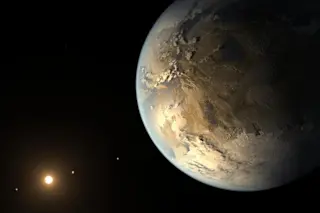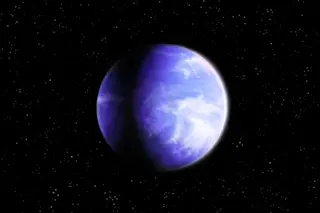Good News for Space Aliens
In July an international team of scientists announced that they had found the oldest planet ever sighted, an important discovery because it suggests that the chances of finding life elsewhere in the universe are much more likely.
Planets had been thought of as latecomers to the cosmic party, created a long time after galaxies and stars and only when heavier elements, like carbon and silicon, had accumulated in the universe. But this 12.7-billion-year-old planet, an enormous gaseous sphere more than twice the mass of Jupiter, puts that view to rest.
Astrophysicists have known something was in that spot since 1992, when radio signals suggested a presence. But most assumed the unknown mass was simply a small star or a brown dwarf, especially since it is located in M4, a globular cluster thought not to have heavy elements. Researchers were shocked when astrophysicist Steinn Sigurdsson of ...














